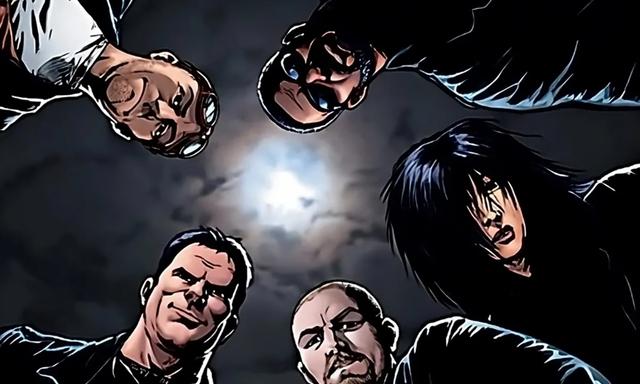If you click on a link and make a purchase we may receive a small commission. Read our editorial policy.
With Russia's war against the Ukraine going on now, Call of Duty: Warzone and its plan to return to the Ukraine-inspired Verdansk is discomforting
The US military has long used Call of Duty for recruitment. With military enlistment low, could the return of Verdansk be part of yet another recruitment effort?

Popverse's top stories
- Robert Kirkman had fancast Lee Pace as his Invincible big bad Thragg years before there was even a TV series to actually cast him in
- Here's how to watch all the New York Comic Con 2025 panels
- Watch Genndy Tartakovsky's Primal season 3 panel from NYCC 2025!
Recently, it was announced that Call of Duty: Warzone would bring back the Verdansk map that the game originally debuted with in 2020. The news was met with enthusiasm from gamers, as it confirmed that the rumors circulating over the past few months had actually been true. While Call of Duty: Warzone took off while the entire world was isolated during lockdown in the earliest days of the COVID-19 pandemic, the game has waned in popularity since. At first glance, it appears that Verdansk coming back to the game could be the adrenaline shot that it sorely needs. And while the simple return of a map to a Call of Duty game doesn’t seem like much, it’s worth taking a closer look into what the implications are for the demographic that Call of Duty targets: teenagers.
For years now, Call of Duty has been used by the US military as a recruitment method targeting Gen Z. The US Army established an esports team in 2018 and began streaming on Twitch, a site where hordes of American teenagers spend their days watching others game. And the military’s presence on Twitch isn’t going unnoticed - they’re seen by millions of people. There are Fortnite and Valorant tournaments hosted by the Army and Navy, and The Guardian reports that the Marine Corps “has partnered with gaming influencers including TheWarOwl and Melonie Mac.” Thanks to in-depth reporting by The Guardian, we know that many military veterans find this troubling, given how impressionable adolescent brains are. Sure, there are definitely teens out there who play Call of Duty who have no desire to actually do Call of Duty stuff in real life, but the military wouldn’t be engaged in these recruiting tactics if they didn’t work.
So let’s return now to Verdansk. A significant part of Call of Duty’s player base is 12- and 13-year-olds. Those kids who were 12 and 13 playing Call of Duty: Warzone during the height of the game’s popularity in 2020 would now be 17 and 18 years old - prime enlistment age. As the uncertainty of young adulthood looms over them today, the return of a relic from their younger years could act as a spark of nostalgia. While we don’t know definitively why Warzone chose to bring back Verdansk, it’s impossible to overlook the fact that it could easily act as a part of the larger machine of military recruitment. Let's also not forget that Call of Duty: Warzone is free-to-play, making it even more accessible to younger eyes.
To be clear, I don’t look down on anyone who enlists in the military - I’m from a military family myself. However, I have also seen firsthand how predatory of a system this can be. Joining the military was the only way that my working-class Irish American family could get advanced degrees to become scientists and engineers. But was an education at the Naval Academy worth the PTSD my grandfather lived with for the rest of his life after he came back from Vietnam? It's a question that eats away at me, and a situation that has had a profound intergenerational impact on my family.
Not to mention, transitioning from military life to the civilian world can be enormously challenging. And today, veterans are more vulnerable than ever to losing their jobs within the federal government - a body that employs a significant amount of veterans. This is the reality that Call of Duty games will never depict, one that virtually no teenager can comprehend when they get hit with a recruitment ad.
Let's also remember how the world has changed since 2020. The feeling of nostalgia tied to Verdansk tastes sour because Russia has since invaded Ukraine in 2022. While there isn't a place in Ukraine explicitly called 'Verdansk,' there's a city called Berdiansk currently under Russian occupation. Sure, the Russo-Ukrainian War has been going on since 2014, but the region that Berdiansk is in has had its reality turned upside down ever since the 2022 invasion. With 8 million Ukrainians now displaced, does it feel at all appropriate in 2025 to stoke a feeling of 'nostalgia' among Americans within a setting whose real-life counterpart has been torn apart by war?
The Call of Duty games in the past have prided themselves on 'realism,' through collaborating with military advisers on games like Modern Warfare, to present an 'accurate' feeling of combat. But as the return of Verdansk reminds us, these games are ultimately products - packaged to appeal to an impressionable audience. In-game battle passes need to be sold to feed the machine, and the same can be said for our military-industrial complex. The fact that 'nostalgia' can even be a sentiment propagated by this franchise makes me nauseous.
Want to know what's coming up next in pop culture? Check out Popverse's guides to:
Follow Popverse for upcoming event coverage and news
Find out how we conduct our review by reading our review policy
Let Popverse be your tour guide through the wilderness of pop culture
Sign in and let us help you find your new favorite thing.
















Comments
Want to join the discussion? Please activate your account first.
Visit Reedpop ID if you need to resend the confirmation email.